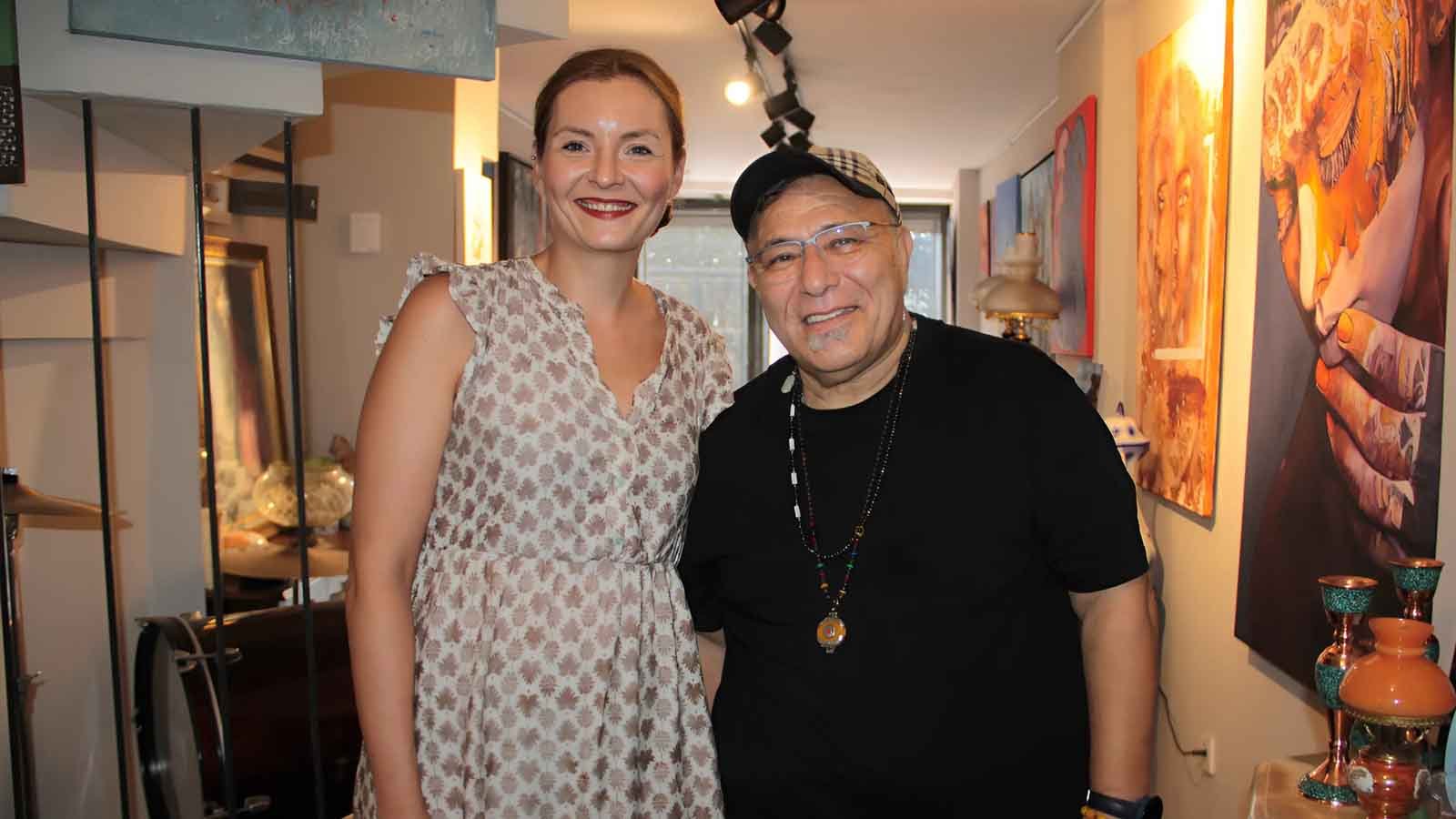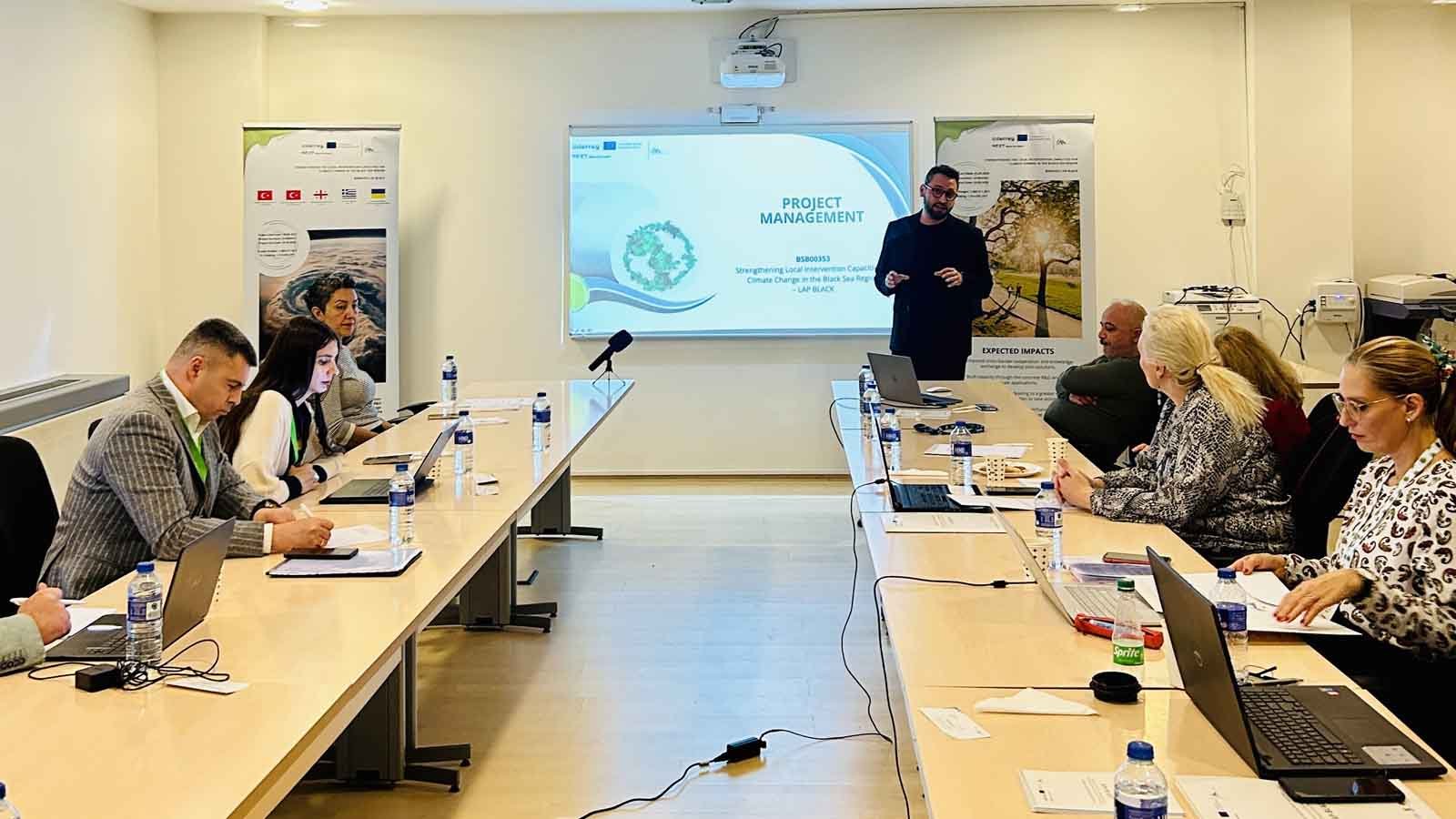The Suna and İnan Kıraç Foundation Pera Museum welcomes autumn with a striking exhibition featuring the works of three pioneering figures in algorithm and computer art: Dóra Maurer, Vera Molnár, and Gizella Rákóczy. Titled “Accounts and Coincidences: Algorithmic Art from the National Bank of Hungary Collection,” this exhibition is part of the 2024 Hungarian-Turkish Cultural Year. It focuses on how Maurer, Molnár, and Rákóczy expand the boundaries of abstraction through computers, algorithms, and mathematics, highlighting the artistic tools of the digital age and the artists’ search for innovation.
The Suna and İnan Kıraç Foundation Pera Museum has brought together art lovers for the “Accounts and Coincidences: Algorithmic Art from the National Bank of Hungary Collection” exhibition, organized as part of the 2024 Hungarian-Turkish Cultural Year. The exhibition, featuring works by pioneering algorithm and computer artist Vera Molnár along with Dóra Maurer and Gizella Rákóczy, is curated by Kinga Rózsa Hamvai.
Intersection of Art, Science, and Mathematics: Accounts and Coincidences
“Accounts and Coincidences” presents a journey into the fascinating world of abstraction and algorithms, bringing together the works of three artists who merge art and mathematics, order and disorder. The pieces by Maurer, Molnár, and Rákóczy reveal the innovative approaches of these artists while tracing the roots of a significant Hungarian tradition that embraced remarkable explorations and innovations in this field since the first half of the 20th century.
Curator Kinga Rózsa Hamvai states that the exhibition aims to introduce three key figures based on mathematical diagrams and series, exploring their similarities. She emphasizes that the artists featured in this exhibition are rendered “timeless” through their consistent application of analytical thinking and the pursuit of freedom: “How do artistic subjects manifest possibilities for free choice, surprise, or chance within these rigorous mathematical demand systems? What responses can be given to the accusation of removing art from humanity? The artists represented here provide different timeless answers using various strategies, whether selecting from countless variations produced by an algorithm, deviating from a pattern, painting with free hands, using colors as elements of a mathematical system, or making random selections.”

Close Look at the Artists and Their Works
Vera Molnár: Pioneer of Algorithmic Art
Vera Molnár, one of the most significant figures in algorithmic art, began working with computers in the early 1960s, when they were still in their infancy. A prominent presence in globally renowned art institutions and events like the Museum of Modern Art (MoMA), Centre Pompidou, and the Venice Biennale, Molnár positions her art within three “themes”: Conceptualists, Constructivists, and Computers.
Since 1946, she has been creating non-figurative and geometric works. After 1959, she began to prepare “combinatorial” paintings and mathematical models using a method she called “machine imaginaire” (imaginary machine). She borrowed the term “imaginary machine” from contemporary composer Michel Philippot. Her oil paintings “Rectangulation of the Circle” (1962–1964) and “Icons” (1962–1966), featured in the “Accounts and Coincidences” exhibition, represent this period. In her works using the “imaginary machine” method, it is possible to see the step-by-step process she advances using simple algorithms. One of the best examples of this process, the series “Slow Rotation Movement” (1957–2013), presents artistic freedom and mathematical constraints together through the gradual transformation of a line.
From 1968 onwards, Molnár had the opportunity to work with a real computer, known as “machine réelle” (real machine), and began producing her works with computer assistance. Through the revolutionary Molnár System, developed with her husband François Molnár, which reveals algorithmic processes in art, she sought to find the artistic “beautiful” by introducing “1% disorder” (the placement of a different color, direction, or line thickness into a regular foundational structure).
Another typical working method of hers, called “Querying Forms,” creates “complex disorder” through the curved movements of the edges of squares, starting from a minimal variation of one or more square parameters. Works like “Hypertransformation” (1976) and “Square Structures” (1987) are examples of this method featured in the exhibition.
The colorful print series “Elektra” (1983) draws inspiration from Claude Monet’s “Impression, Sunrise” (1872) and stands out as an experimental work that merges electronics and art.
In 2007, the artist was awarded the Chevalier of Arts and Letters by the French Ministry of Culture. Among her later works are collaborations in the NFT field with familiar names in generative art, including Martin Grasser. Vera Molnár, who passed away in December 2023, just a month shy of her 100th birthday, maintained her innovative perspective, developed through the artistic tools of the digital age, until the end of her life.

Dóra Maurer: Movement and Mathematical Structures
In her over fifty years of artistic life, Dóra Maurer has produced works in graphic arts, photography, film, and painting, focusing on themes of movement, variability, and mathematical series. Her works have been exhibited in pioneering art institutions such as Tate Modern and the Ludwig Museum. In her practice, themes like mathematical sequences, measurements, and ratios stand out. The artist describes her creative process as follows: “I am concerned with the thematic development of structure, in a bad phrase. That is, I take multiple components—these could be geometric shapes or human traits that are difficult to define verbally—resulting from an impression or experience, and juxtapose them using a suitable order. I continue to observe what emerges and reshape it when possible.”
Her film “Involuntary Movements” (1973) explores themes of sequence and variation by repeating a series of involuntary movements of a woman. This work combines Maurer’s systematic approach with the randomness of art. The film “Timing” (1973-1980), which develops the concept of structure, is among the works showcased in the exhibition.
Since the 1980s, Maurer’s practice has shifted towards painting, exploring the changing perception of colors created by the reflection of planes and spaces in her series “As You Wish,” where she shifts geometric grids with colors. Works like “As You Wish 12” (1990) and “As You Wish 54” (2009) prominently feature mathematical color arrangements and geometric forms.
In the “Overlappings” series, which began in the late 1990s and is also represented in the exhibition, the artist fills the grid areas familiar from her earlier works with colors by bending and twisting them, making overlapping pseudo-transparent color fields the main motif of her paintings.
Gizella Rákóczy: Geometric Art and Spirals
As a leading figure in geometric art, Gizella Rákóczy began exploring the movements and series possibilities of four-armed spirals in 1976. The work “Rotation Directions of Four-Armed Spirals” (1978-1979), featured in the exhibition, demonstrates how the artist examined these structures with a combinatorial approach.
After 1998, watercolor replaced tempera paintings based on numerical laws of four-armed spirals, with Rákóczy layering the tones of transparent paint according to the formula of the Fibonacci series. The work “4 Tones of 4 Colors” (1998) reveals how Rákóczy achieved aesthetic results through systematic arrangements of colors. Another work, “24N” (2002), created using the Fibonacci series, proves that the number of color variations and resulting tones across 24 panels is nearly infinite.
Since 2000, Rákóczy has been interested in the labyrinth of Cretan lines. Her works from this period explore the relationship between the labyrinth—an important symbol since antiquity—and geometric forms and mathematical structures. The piece “4 Colored Labyrinth” (2005) is a significant work in the exhibition that shows how the artist transformed this symbolic structure into an artistic exploration.
The exhibition “Accounts and Coincidences: Algorithmic Art from the Hungarian National Bank Collection,” designed by Yelta Köm (Studio No Frame) and with graphic and catalog design by Esen Karol, will be open to visitors on the 4th and 5th floors of the Pera Museum until January 26, 2025.
The Pera Museum is open for visits from Tuesday to Saturday, 10:00 AM to 7:00 PM, and on Sundays from 12:00 PM to 6:00 PM. On Fridays, all visitors can enter for free from 6:00 PM to 10:00 PM as part of “Long Friday,” and on Wednesdays, all students can visit for free during “Young Wednesday.”




























